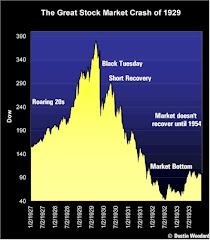This week I was out to a breakfast for the Minister of Economic Development for Ontario.She was proud of the fact that Ontario's Debt to GDP ratio was running at less than 30%. She spoke of it being important relative to Canada's competitors in the developed world. She then went on to state that is one of the lowest in the world.
The Minister compared Ontario's debt to the country debt of Greece, Ireland and a few other countries I was embarrassed that she was saying something that ridiculous especially when she was with the Revenue Minister of Ontario.
Several stories have popped up lately in the Canadian media saying how good and stable the financial situation is in Canada. What is the real story?
Canada's Debt to GDP ratio
The last report in the Globe and Mail showed Canada's GDP at $1.3 Trillion. The Harper Index
If we look at the debt numbers we see that Canada is not in rosy shape. Compare the numbers that The Economist present in The Global Debt Clock. It puts Canada at 82.5% somewhere between Greece at 119% and Ireland at 65.6%.
To look at the debt numbers we can go to the Minster of Finance Fiscal Reference Tables - October 2010
Canada's Debt
(millions)
Newfoundland and Labrador $ 8,457
Prince Edward Island 1,584
Nova Scotia 13,319
New Brunswick 8,353
Quebec 142,847
Ontario 193,589
Manitoba 12,253
Saskatchewan 3,638
Alberta -23,738
British Columbia 28,037
Total Provincial Debt 388,333
Table 15- Canada Federal Debt 582,472
Total Combined $ 970,805 Billion
Based on my estimates the Debt to GDP ratio looks to be at 74.6%.
Serious Problem
Despite the congratulatory comments Canada is getting from around the world... we have a serious debt problem.
At least there are a few commentators out there that agree with me. An article in the Calgary Sun talks about the issue Canada’s fiscal health ignites fierce fight
Gaudet places debt reduction above all. He argues “federal plans for deficit elimination are too timid. Better fiscal health means shedding some spending.” In December, however, the IMF released a report that suggests it was generally pleased with the way Ottawa is handling the economy, aside from warnings about health-care spending and possible sluggish growth.
“Canada has weathered well the global recession, reflecting a strong economic and financial position at the onset of the crisis and a sizeable macro policy response,” the report says. (That macro response was largely stimulus, and thus deficit, spending.)
It says the “financial system has avoided systemic pressures amid the global turbulence, thanks in good part to strong supervision and regulation.”
None of that pablum for Gaudet. So averse is he to deficits, he’s pushing a drastic plan to balance the budget in short order.
At least I am not a alone in my cynicism of the situation. An article from the Centre for Tax and Budget studies at the Fraser Institute in the National Post declares:
The bottom line is that the government's current plan to return to balance is based on slowing the growth of federal spending increases over the next five years, while hoping revenues catch up as the economy continues to recover.
Interestingly, when the plan was announced in last year's budget, The Globe and Mail noted that the Conservatives had "launch[ed] an age of austerity." The National Post applauded the plan as a "genuine effort to restore balance to the nation's books."
Forgive us for being a little more realistic, but the current plan calls for spending to increase at a rate less than population growth and inflation in every year between 2010-11 and 2014-15, something the Conservative government has not managed to do in the five years it has been in office.
A true austerity plan aimed at balancing the budget would have taken a page from former prime minister Jean Chretien and finance minister Paul Martin's 1995 plan. The reforms by Chretien/Martin eliminated a deficit much larger than the current one (4.8 % of GDP compared with 2.8%), within three years.
Chretien and Martin's 1995 plan proposed cutting program spending by almost 9% over just two years to get a handle on federal spending. These weren't reductions in spending growth. These were actual reductions in spending.
Even more impressive is that Chretien and Martin outperformed their goal and reduced spending by 9.7%.
Finally in an interesting comparison of our situation to the United States, Diane Francis wrote Canada’s profligate provinces
Canada, on the other hand, has a public debt problem that could be more serious than the one south of the border.
Bill TuftsThe Canadian federal government likes to go around the world crowing about its low public debt. Not true. Canada’s federal government certainly cleaned up its act since 1996 when its debt to GDP ratio hit 68.4%. Today it is 45%.
But that’s only half the story.A simple extrapolation of their deficits will land them in the same category as Greece or 130% of GDP if their cultures of spending don’t change.
Canada’s debts are at a ratio of 90% of GDP mostly due to chronic overspending by Quebec and Ontario. Their profligacy is in stark contrast with Canada’s three westernmost provinces.
Fair Pensions For All




No comments:
Post a Comment